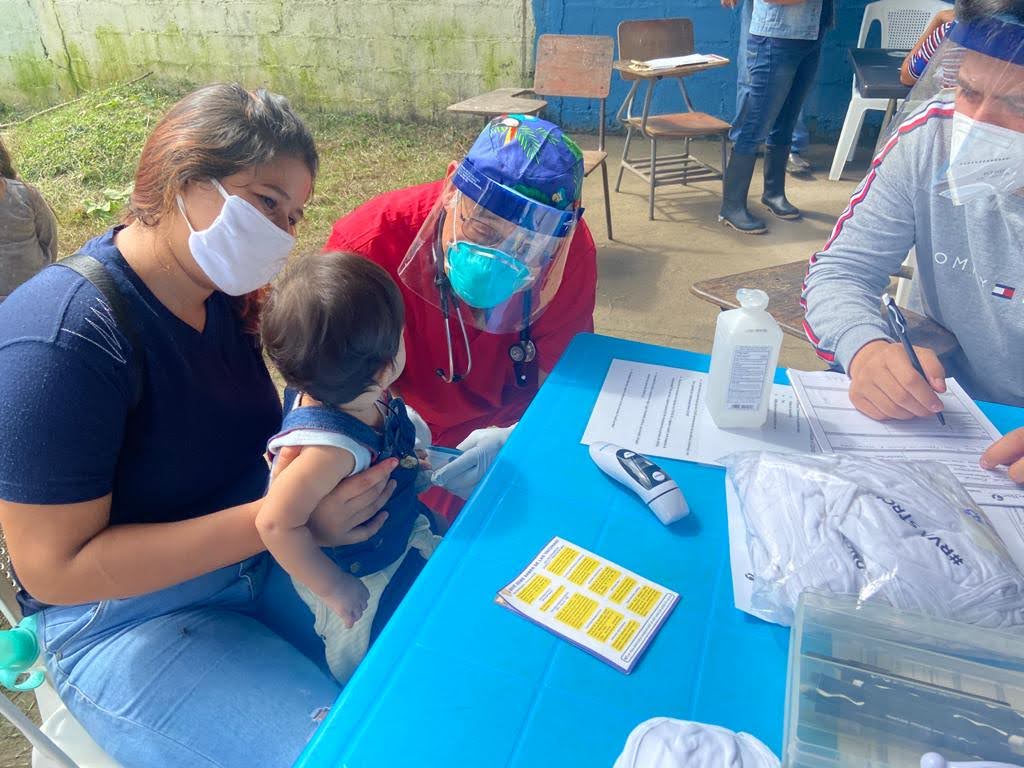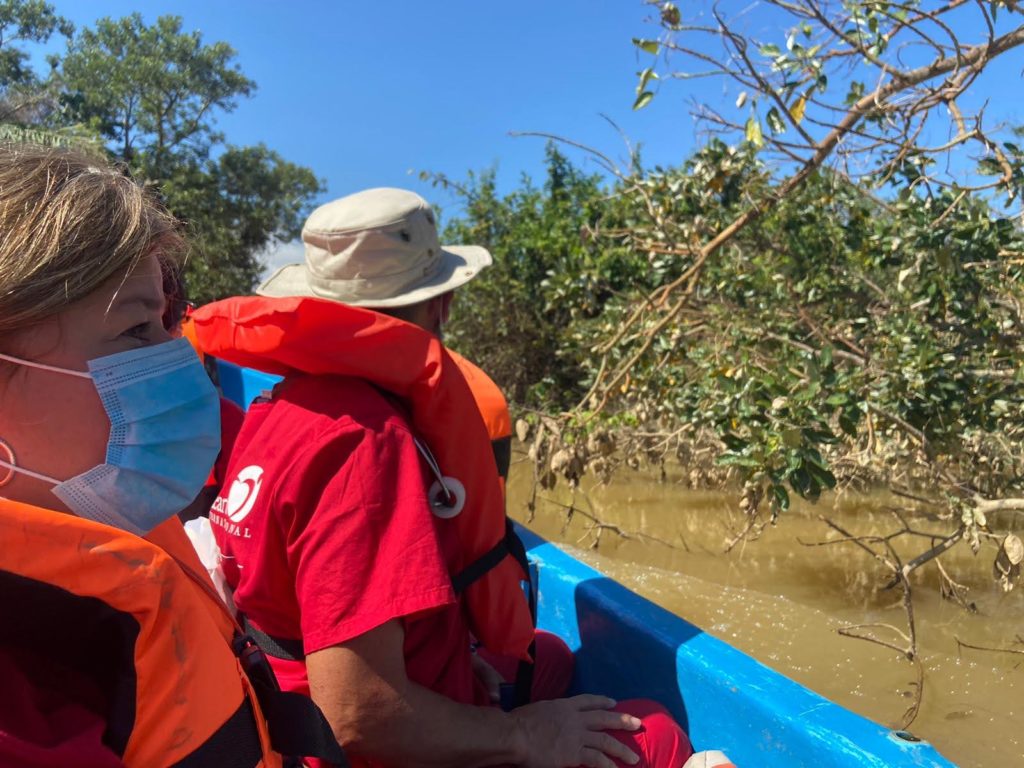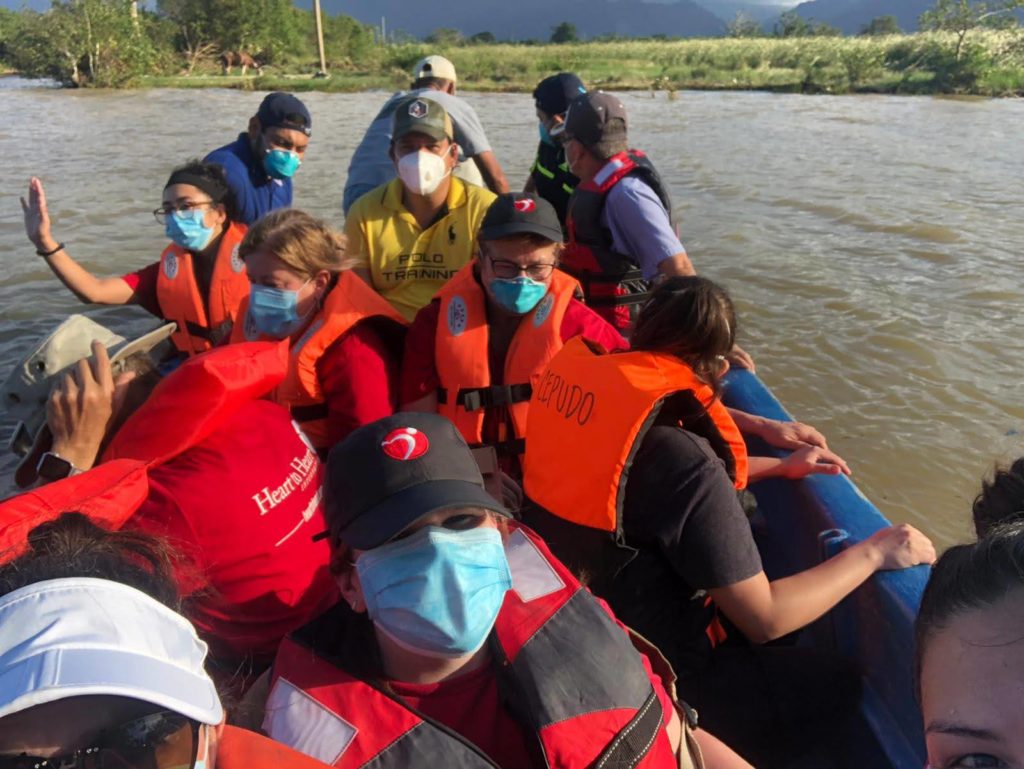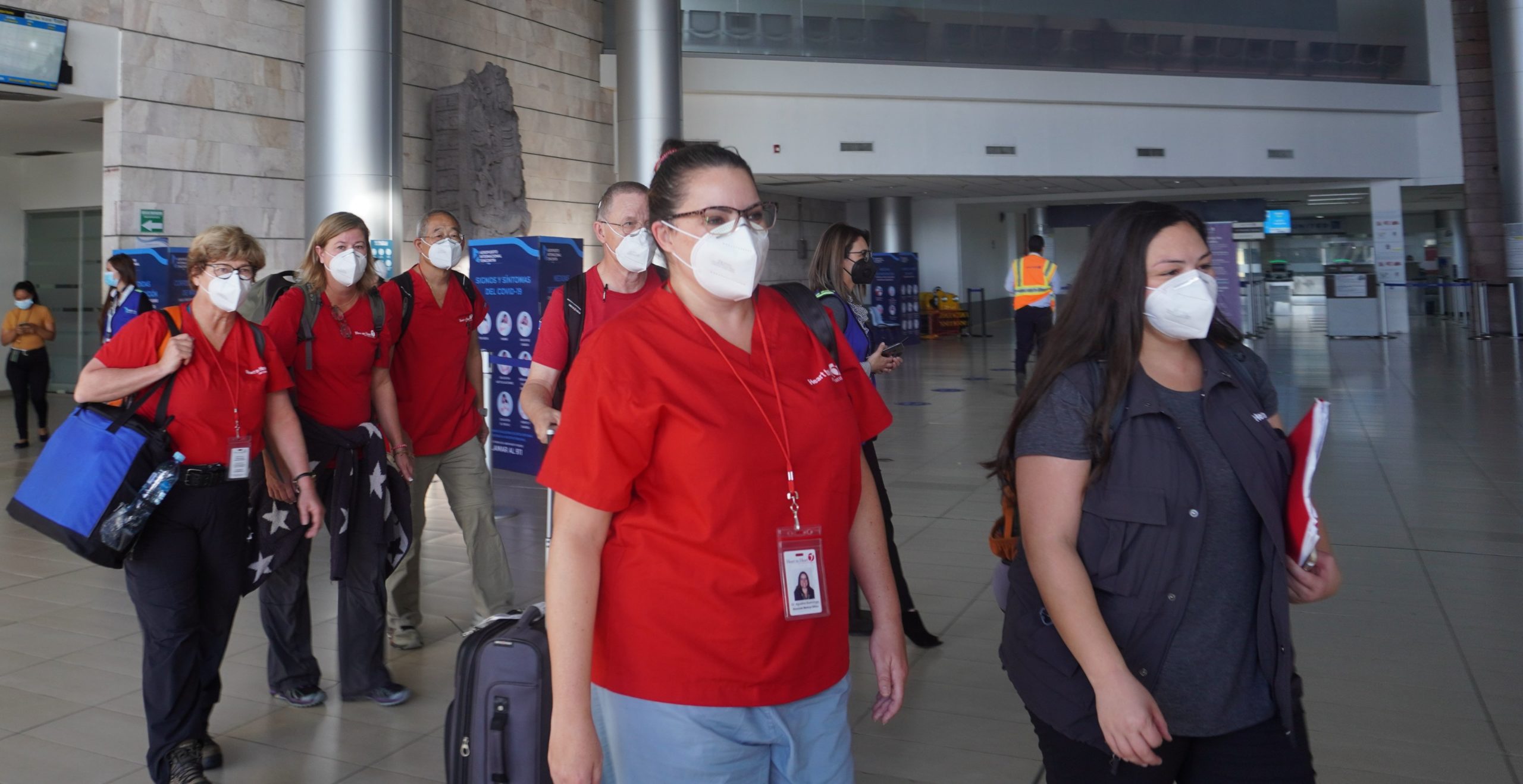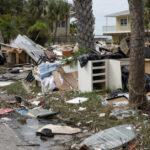November 25, 2020 – Upon arriving in San Pedro Sula on November 21, the team immediately began seeing patients in shelters and various communities around the area. In five days, the team saw over 350 patients, including many children. Some patients had COVID-19 and others had skin ailments caused by the flood waters or needed replacement medications lost during the floods. The sick children needed a little extra TLC and our team was more than happy to dote on the little ones. The team even had to travel by boat to reach an area where people had been completely cut off by flooding from the hurricanes. It’s a complex situation as the group manages a disaster during a global pandemic but works to care for as many patients as possible in rural medical clinics.
November 19, 2020 – Members of the Heart to Heart International disaster response team have arrived in Honduras. The team was greeted by members of the Honduran government as well as representatives from the Pan American Health Organization. The team will travel tomorrow to a remote region, cut off from aid by the flooded roads and bridges, where they will begin treating patients living in shelters.
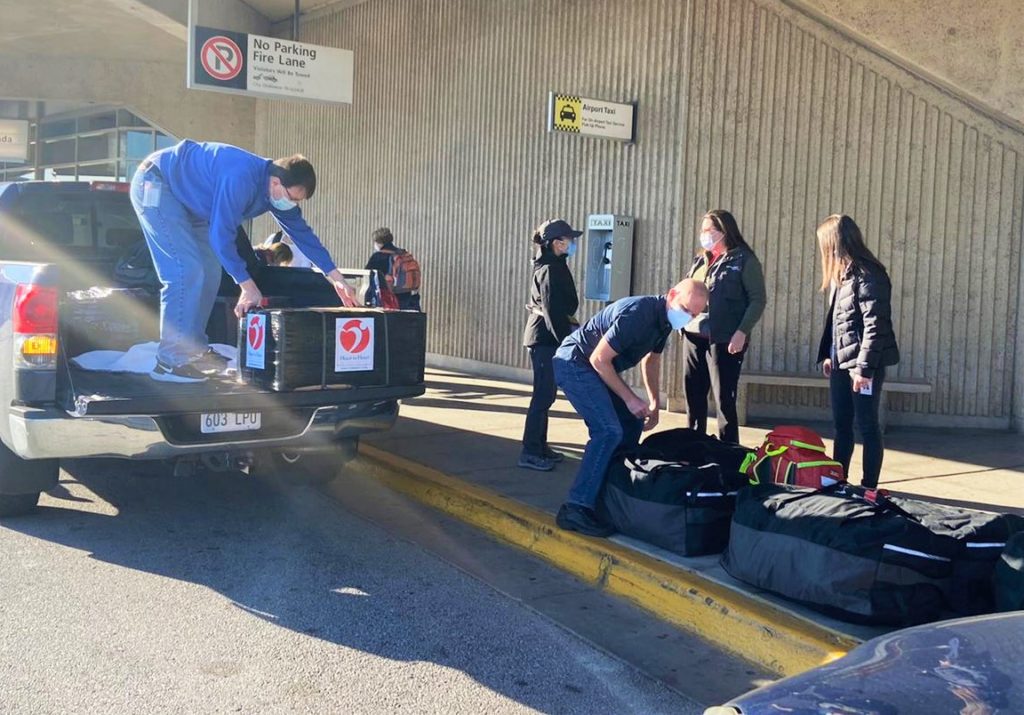
November 17, 2020 – The Honduran government has requested HHI to respond to Hurricane Eta as an EMT Type 1 Mobile. HHI has mobilized an eight-person team, which departed this morning. The team will be working with a local organization to assist with on the ground logistics.
Hurricane Iota barreled into a Central America still recovering from Eta on Tuesday, bringing with it the possibility of life-threatening flooding, catastrophic winds and mudslides. Its landfall was just 15 miles south of where Hurricane Eta struck. The storm reached Category 5 strength and made landfall at 10:40 p.m. ET as a Category 4, with maximum sustained winds near 155 mph, according to the National Hurricane Center. It weakened significantly upon making landfall. It will continue inland into Nicaragua on Tuesday morning and afternoon before moving into southern Honduras late Tuesday. Iota should dissipate by Wednesday night, the center said.
Many areas of Honduras initiated mandatory evacuation placing even greater stress upon the region as many were already displaced. Damage assessment by the Honduran government has been significantly delayed due to Iota’s impending landfall. More information should emerge once Iota clears Honduras.
On Tuesday, November 3, 2020, Hurricane Eta made landfall as a Category 4 hurricane just south of the city of Puerto Cabezas, on Nicaragua’s Caribbean shore. Severe wind damage and extreme flooding throughout the region is anticipated with expected damage extending into Honduras. UNICEF estimates 1.2 million people will be impacted by the storm.

Eta weakened into a tropical depression and is expected to continue causing heavy rains in Honduras, Nicaragua, Guatemala, Costa Rica, El Salvador, Belize and southern Mexico. After leaving the north coast of Honduras, it will continue its passage to the Caribbean Sea again, this time toward Cuba, possibly intensifying again as a tropical storm.
Much damage is reported to bridges and road infrastructure, landslides as well as damaged and flooded homes. Significant flooding occurred, leaving tens of thousands of people with their homes flooded. Many did not have time to leave and waited to be rescued on their roofs.
People have been killed in landslides and drownings in Honduras, Nicaragua, and Guatemala.
HHI is active on coordination calls with Pan American Health Organization (PAHO) and monitoring the situation and is currently working with partners to send medical aid to the affected areas.
More Stories:
- Unprecedented Texas Flash Flooding: HHI Mobilizes Relief
- Delivering Critical Aid to Sudan’s Crisis-Affected Communities
- No More Waiting: On-Site Labs Deliver Immediate Answers and Faster Healing
- New Lab Technology for Tennessee Health Clinic
- All You Need to Know About Hurricanes: A Complete Guide for Hurricane Season










